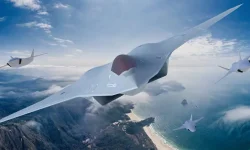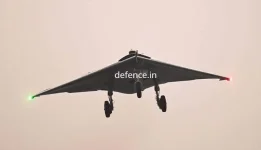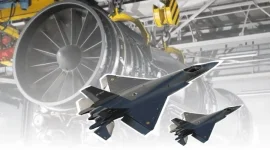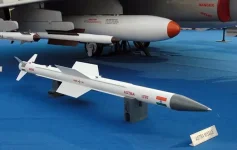- Views: 6K
- Replies: 18
India's flagship stealth drone program, the Ghatak Unmanned Combat Aerial Vehicle (UCAV), is set to evolve beyond its primary role as a deep-penetration bomber.
New details confirm that the advanced platform will also be developed into an air superiority fighter, capable of engaging hostile aircraft and defending the nation's airspace.
This dual-role capability marks a significant leap in India's autonomous warfare strategy, positioning the Ghatak as a versatile asset for both offensive and defensive operations.
The ambitious project is being led by the Defence Research and Development Organisation (DRDO) and its Aeronautical Development Establishment (ADE).
The Ghatak is a 13-tonne flying-wing aircraft designed for a low radar profile, making it difficult for enemy air defences to detect. Its main function is to carry up to 1.5 tonnes of precision-guided munitions in an internal weapons bay to strike high-value targets deep inside hostile territory.
In a major strategic enhancement, the UCAV will now feature an air-to-air combat variant. This configuration will equip the Ghatak with air-to-air missiles, such as the indigenous Astra series, allowing it to perform Combat Air Patrols (CAP) and intercept incoming enemy fighter jets or strike aircraft.
This development effectively transforms the Ghatak from a specialised strike drone into a multi-role unmanned fighter, bolstering India's air defence network.
Propulsion for this advanced UCAV will be provided by the indigenous Dry Kaveri engine, a non-afterburning jet engine developed by the Gas Turbine Research Establishment (GTRE). This engine is optimised for fuel efficiency and a reduced heat signature, which are critical for stealth and long-endurance missions.
Recent reports confirm the Dry Kaveri has successfully completed high-altitude tests and is ready for flight trials, with Godrej Aerospace contracted to manufacture the initial batch of engines, marking a milestone for India's self-reliance in aero-engine technology.
The Indian Air Force (IAF) has expressed plans to eventually deploy eight to nine squadrons of the Ghatak.
The platform's design incorporates advanced Artificial Intelligence (AI) and Manned-Unmanned Teaming (MUM-T) technology. This will allow the UCAV to operate in coordination with manned fighter jets like the Su-30 MKI and the upcoming Advanced Medium Combat Aircraft (AMCA), acting as a "loyal wingman" to multiply the force's effectiveness in heavily defended environments.
The foundation for the Ghatak was laid by the successful trials of the Stealth Wing Flying Testbed (SWiFT), a smaller, one-tonne technology demonstrator. SWiFT validated key autonomous technologies, including take-off, navigation, and landing.
While progress on a full-scale Ghatak prototype is underway, the program is awaiting final sanction of an estimated ₹5,000 crore from the Ministry of Defence to move into the flight testing phase.
Despite this, DRDO and ADE are proactively developing an engineering model to validate critical systems, with a prototype rollout anticipated by 2028 and production for the IAF targeted for the late 2030s.





